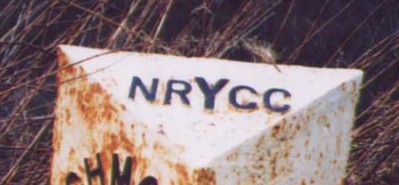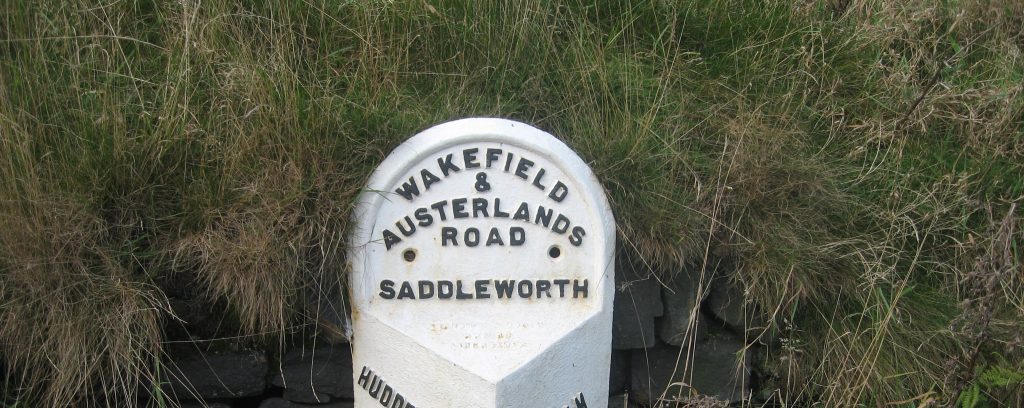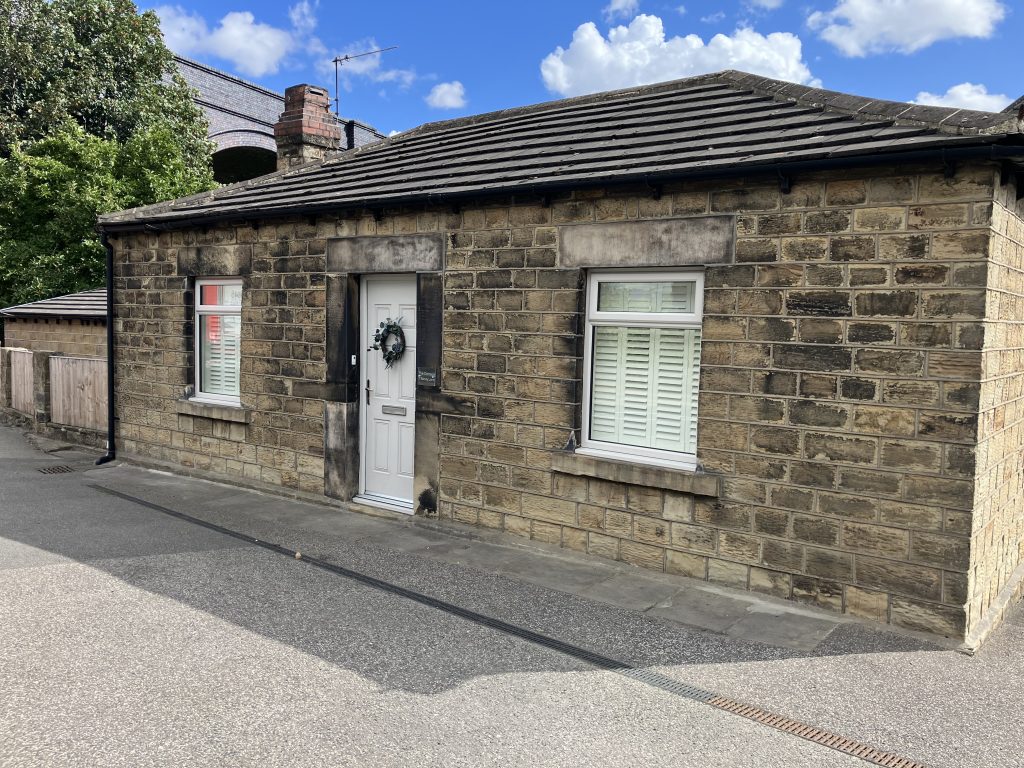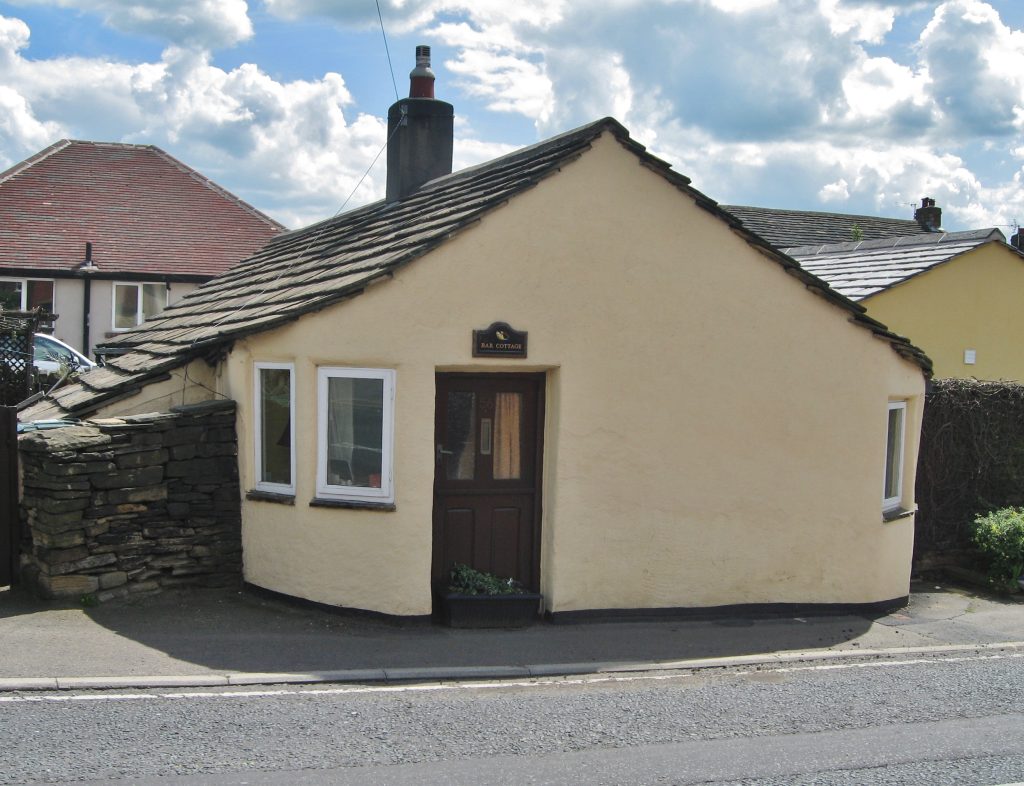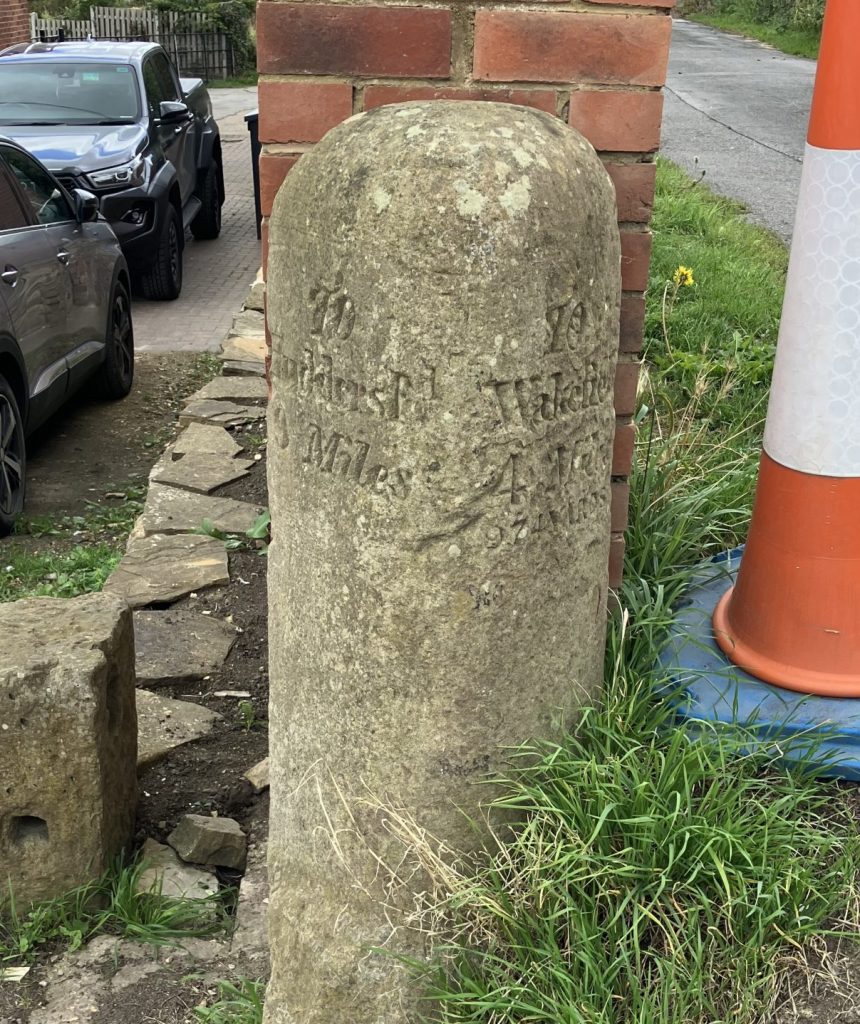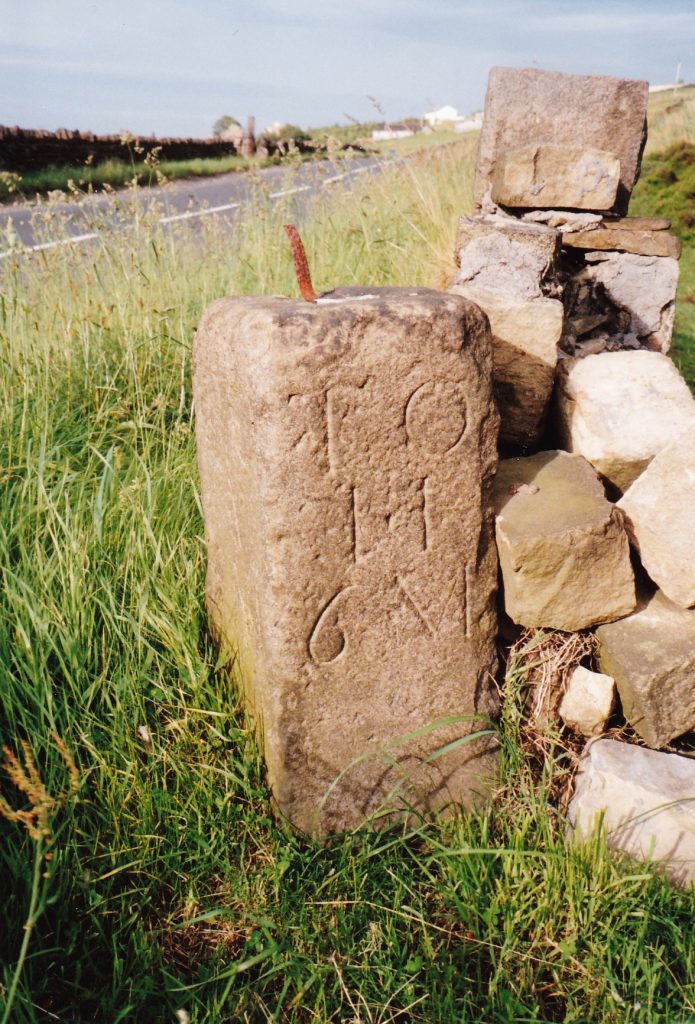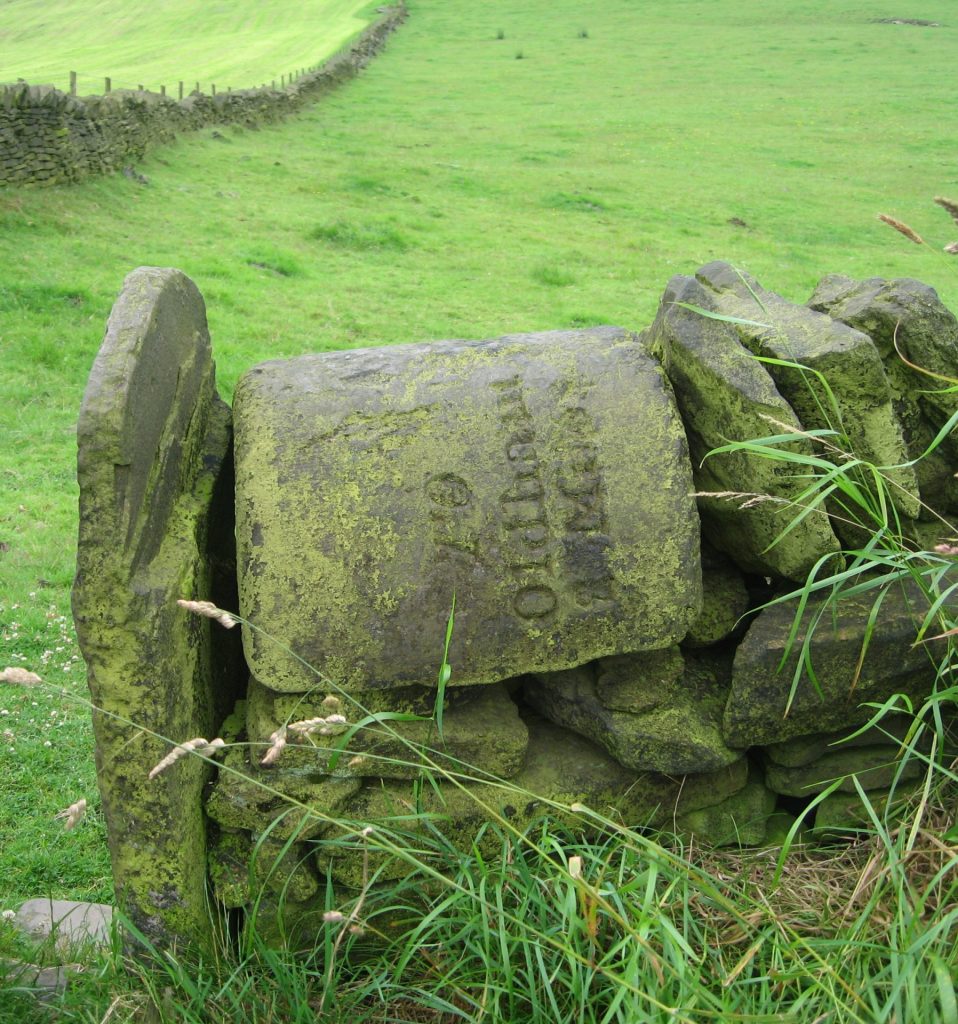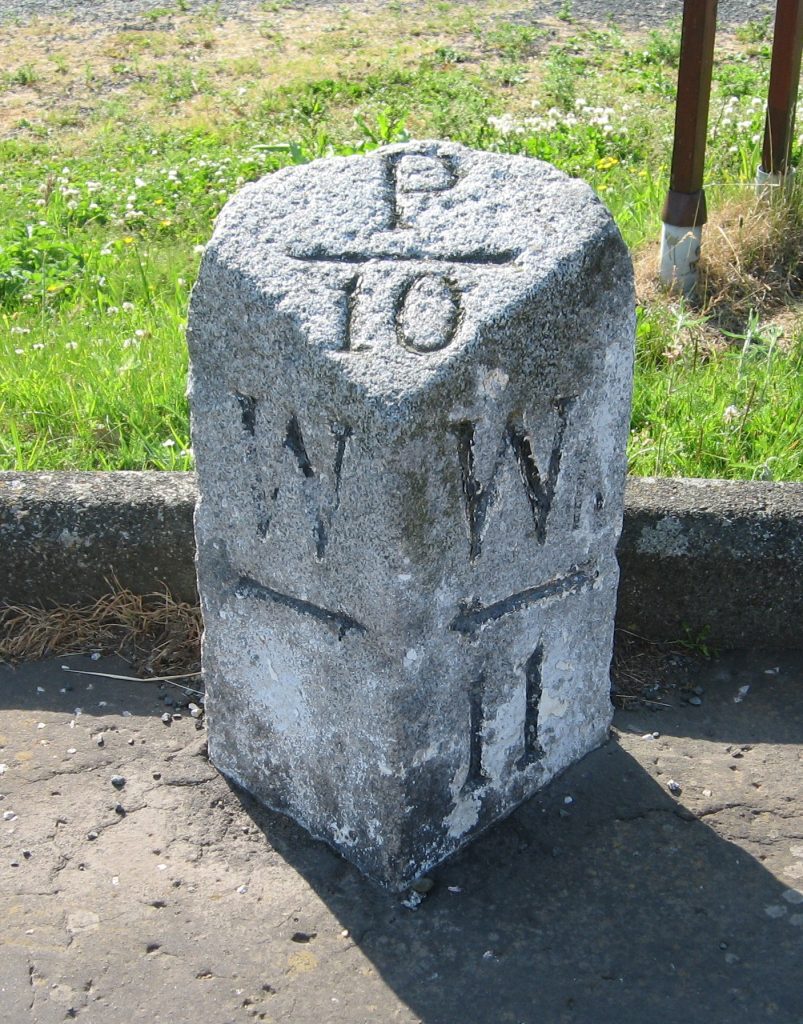Late 19th century milestones in the North Riding
Late 19th century milestones in the North Riding
The North Riding has many milestones surviving from the turnpike age, some the original 18th century ones. Some, however, were replaced later in the 19th century, such as these two here. On the left one at Breckonborough, between Northallerton and Boroughbridge on the Boroughbridge, Darlington and Durham Turnpike (now the A167); on the right one a mile north of Thirsk on the B1448, erected by the Thirsk Turnpike Trust on a road that led from Northallerton to York. Both give distances to London. Although not too dissimilar in style from later milestones the foundry that produced them is not known.
 |  | |||
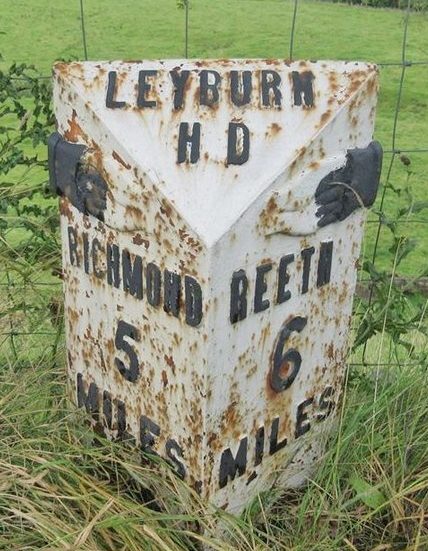
Later in the century (following the 1862 Highways Act) Highway Boards were established, to take over from failing/failed turnpike trusts. Some of these erected new milestones, with pointing fingers and the name of the Highway District (H D).
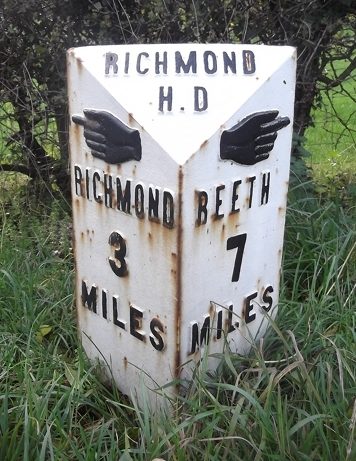
At the October 1867 “Gene Quarter Sessions of the Peace” for the North Riding the Justices made the final order for dividing the county into highway districts. This excluded those Boroughs and Urban Districts which were already responsible for their roads. There were 16 districts, details published in the London Gazette, each named with all the parishes and townships they comprised
Among them were:
Askrigg District, covering Upper Wensleydale;
Leyburn District, covering mainly Lower Wensleydale;
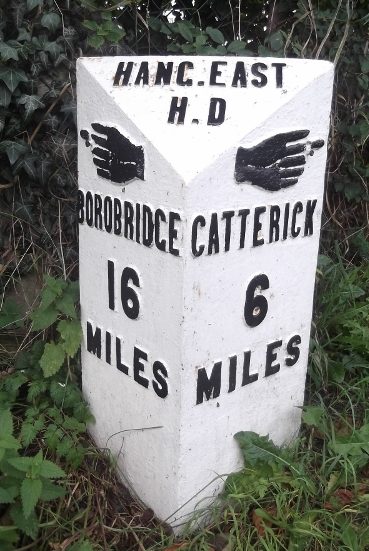
Richmond District, covering Swaledale and an area east of Richmond up to the Tees;
East Hang District, covering the area around Bedale and south to the West Riding boundary.
The East Hang District was named after the East Hang Wapentake (originally just the Hang Wapentake but divided in the 13th century into East and West). This gets its name from the wapentake meeting-place at Hang Bank, between Hutton Hang and Finghall. Hang West covered all Wensleydale and so was not a Highway District.
Here are some of their milestones.
The North Riding County Council was established in 1889, and took over the functions of the Highway Boards. At some point it set about replacing older turnpike milestones with new ones. There were two types, both usually made by the Mattison foundry at Leeming: the first, quite elaborate, with a stylised Yorkshire rose and the name of the district where it was; the second, possibly later and definitely cheaper, merely has the letters NRYCC. The examples below are from Hinderwell and Stillington, near Easingwold.
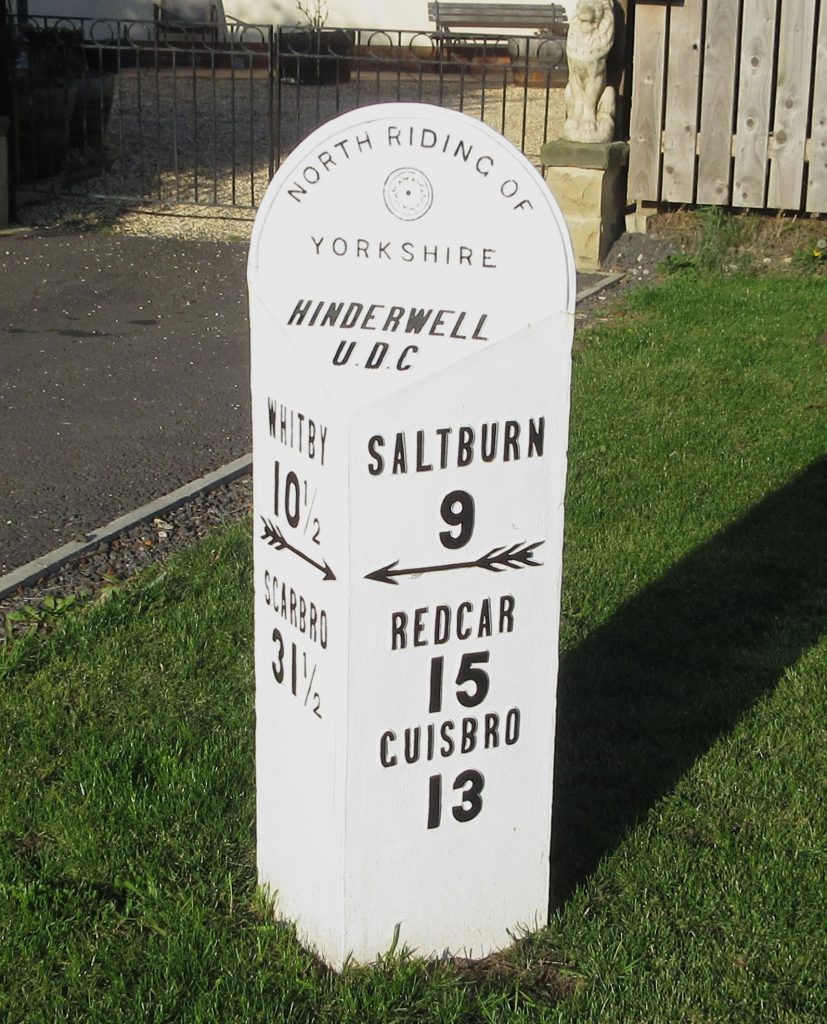
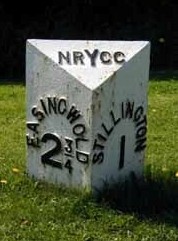
.
.
.
.
.
.
.
.
Sources: Article by Christine Minto in the Milestone Society Newsletter, no 22, Jan 2012, pp 34-5; London Gazette, 29 October 1867, p 5725
RWH / Sept 2025
Late 19th century milestones in the North Riding Read More »
